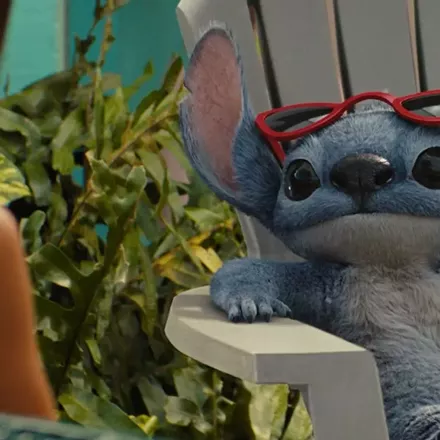The September Issue
Style & Substance: The fashion world provides an art-vs.-commerce battleground in The September Issue.
By Scott Renshaw @scottrenshawDirector R.J. Cutler certainly didn’t have that kind of control over Anna Wintour and Grace Coddington in the documentary The September Issue, but it’s still hard to resist thinking of the tension between the two subjects in terms of their hairstyles. Wintour, the longtime editor in chief of Vogue magazine, wears a severe blond pixie cut framing her imperious stares; Coddington, the magazine’s creative director, rocks a tumble of red frizz that looks like it would be at home in an ’80s metal band. The September Issue may in part be a study of the fashion industry as a whole, but the 20-year working relationship between Wintour and Coddington becomes a fascinating microcosm for the never-ending tug-of-war between art and commerce, in a setting where we may not think to look for it.
As a framing structure, Cutler follows Wintour, Coddington and other Vogue staff members for five months in 2007 leading up to the magazine’s September issue—traditionally the biggest and most important, with its showcase of the new fall fashion lines. We watch Wintour and company jet from one industry Fashion Week to another, and sit down in staff meetings where they attempt either to feel out or set the latest trend; “the jacket is the new coat,” suggests one staffer. Meanwhile, Coddington brainstorms elaborate photo-spread concepts, only to watch as Wintour picks apart the layouts and discards some of Coddington’s favorite shots.
The interaction between Wintour and Coddington is the film’s centerpiece, and Cutler does a terrific job of setting up his two subjects—and not just their coiffures. Coddington, herself a former fashion model, genuinely sees an artistry in the pictorial fashion fantasies she oversees, and it’s hard not to agree with her; her sparks of inspiration even include inserting one of the documentary’s cameramen into the concept for a photo. Wintour, meanwhile, says little, but we get enough of a picture of her family to see that she could be driven by more than a little defensiveness about her chosen profession. Even Wintour’s own college-age daughter cringes at the idea of making fashion her career, quipping that “there’s more to life.”
But Wintour, like Coddington, is clearly extremely good at what she does, and at its best The September Issue observes why both of their perspectives are ultimately necessary for an enterprise like Vogue to thrive. While Coddington constructs her visually arresting homage to 1920s Parisian photographer Brassai, it’s Wintour who needs to (literally) hold the hand of a frustrated Nieman Marcus executive and assure that she’ll help with getting designers to deliver enough product to meet demand. Even after the clashes over vision and Coddington’s wry commentaries on Wintour’s tastes, each woman ultimately shares with the camera a respect for what the other brings to the partnership: Wintour praising Coddington’s creative sensibility, and Coddington acknowledging the professional savvy by Wintour that allows a venue for her work.
Occasionally, Cutler strays from focusing on this intriguing dynamic, and that’s usually when the film starts to feel a little flabby. Amusing though it may be to watch Vogue’s beefy editor-at-large André Leon Talley—a flamboyant lover of “beauty” in the body of a defensive tackle—flail at tennis, the sequence doesn’t add much to an understanding of the much-mocked fashion industry. Nor does Wintour’s support for a young up-and-coming designer named Thakoon feel like it adds much insight.
The truth is, the fashion industry itself is more of a backdrop than a subject here. Coddington and Wintour could easily be a film director and a studio boss, or a musician and his label, playing out the same friction where both sides often miss their essential symbiosis. Their hair may represent their distinctiveness in The September Issue, but maybe it’s better to think of Anna Wintour and Grace Coddington coming together to form the creative-tandem equivalent of a “mullet”—business in the front, and a party in the back.
THE SEPTEMBER ISSUE
Documentary
Rated PG-13
More by Scott Renshaw
-
Film Reviews: New Releases for May 30
Karate Kid Legends, Bring Her Back, Jane Austen Wrecked My Life, Bad Shabbos, Tornado
- May 29, 2025
-
JANE AUSTEN WRECKED MY LIFE, BRING HER BACK, June 2025 Special Screenings
Two new releases, plus SLFS Summer Showdown, Wild & Scenic Festival and more.
- May 28, 2025
-
Film Reviews: New Releases for May 23
Lilo & Stitch, Mission: Impossible - The Final Reckoning, Friendship, Fountain of Youth, The Last Rodeo
- May 22, 2025
- More »
Latest in Film Reviews
Readers also liked…
-
Sundance 2025 wrap-up plus February special screenings
Uncertainty about the future location shifts focus away from the movies
- Feb 5, 2025












